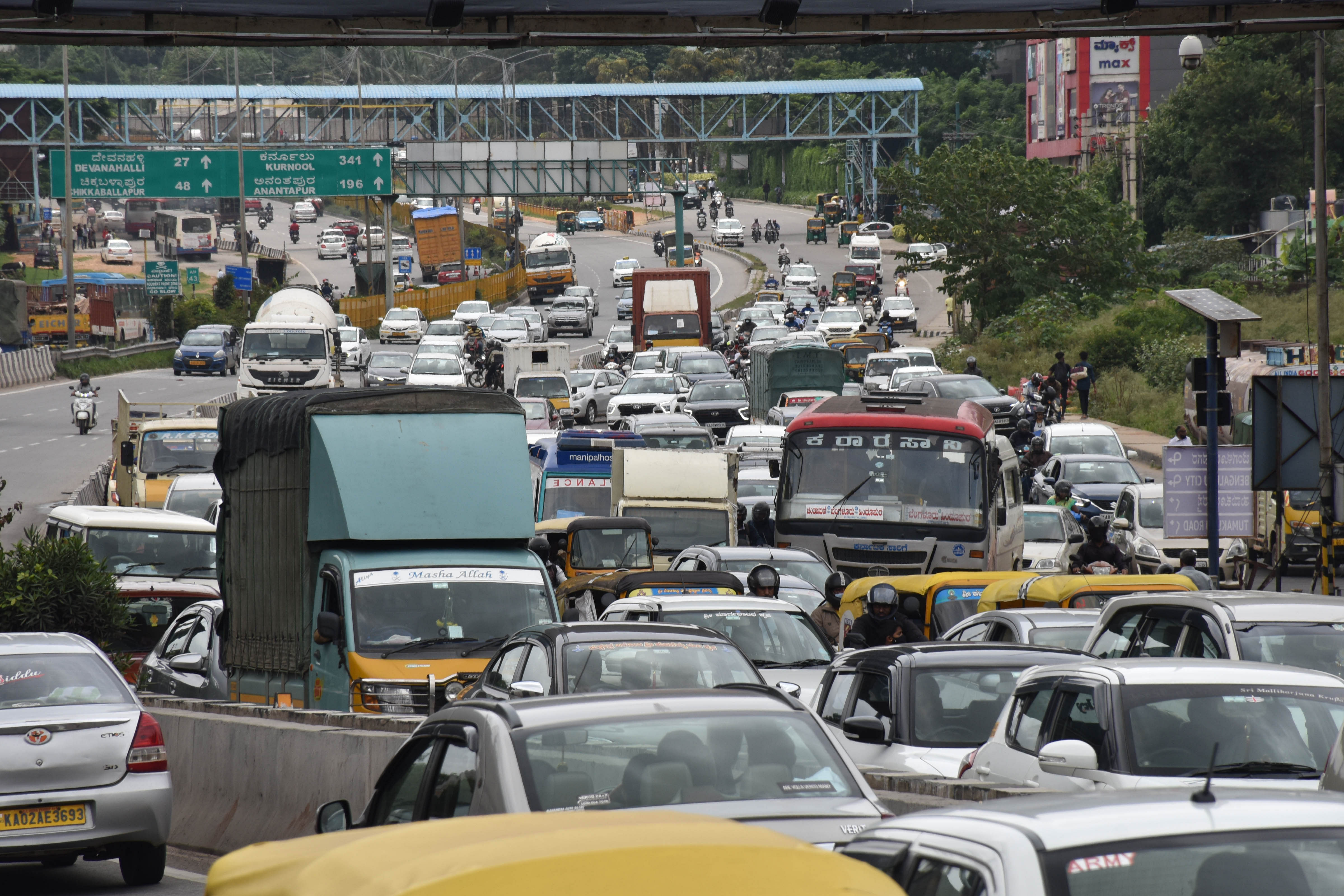
Rapid growth of population and an increasing number private vehicles have contributed to the phenomenal growth of traffic on the roads of Bengaluru. Traffic congestion is the obvious consequence as the scope to widen the city roads is limited for lack of space. There is a need to reduce the number of privately-owned vehicles on roads to ease Bengaluru’s notorious traffic.
One of the solutions is to encourage non-motorised transport like use of bicycles, and walking. Bicycle usage should be promoted for short distances -- for example, among students for travel to schools and colleges, and among the young to work places that are within a 5–6 km. Bicycles were one of the most widely used modes of transport in Bengaluru during 1970s and 1980s. Apart from cycling, walking for short distances should be adopted by citizens, which not only help to reduce traffic congestion but also to build a healthy lifestyle.
With increasing urban sprawl and rising income levels, non-motorised transport (NMT) has lost the appeal and importance it once enjoyed. Statistics too point to the same -- share of bicycles, out of the total trips in Bengaluru, has declined from 17% in 1981 to less than 1% in 2021.
Longer trip lengths, poor road conditions and safety concerns have made cycling more difficult. Non-motorised modes are exposed to greater risk of accidents as they share
a common right of way with motorised, fast-moving and heavy vehicles. Non-motorised modes are undoubtedly environmentally friendly and must be given their due in the transport system of the city.
Firstly, the safety concerns of cyclists and pedestrians should be addressed. Constructing segregated rights of way for bicycles and pedestrians is an important step. Apart from improving safety, the segregation of vehicles moving at different speeds will improve traffic flow, increase the average speed and reduce emissions resulting from sub-optimal speeds. Such paths would be useful not only along arterials to enable full trips using NMT, but also as a means of improving access to major public transport stations. Segregated access paths, and safe and convenient bicycle parking, would also contribute to increasing the use of public transport. A little bit of creativity in providing facilities like shade giving landscaping, drinking water and resting stations along bicycle corridors can certainly help encourage the use NMT.
The use of the central verge along many roads, along with innovatively designed road crossings, hold promise to be developed as cycle tracks. We have seen from experience that many such cycle tracks and pedestrian paths do not get used as they are meant to be, initially. However, there is also the fact that most of these facilities are poorly designed and without fully recognising the limitations and problems faced by cyclists or pedestrians.
It would, therefore, be essential that such facilities be constructed after an open debate on the designs with experts and the community that it is intended for. If done so, it is reasonable to expect that such a public appraisal would lead to designs that are practical, hence better used when implemented.
Secondly, encroachment of footpaths affects pedestrian safety and requires strict enforcement by the authorities, again with public participation. Pedestrian safety is also adversely affected as safe crossing facilities are absent at busy intersections of even high-traffic corridors. Of course, pedestrian safety is also the responsibility of everyone sharing the road with others. Riding on footpath has become a nuisance in Bengaluru where volume and capacity ratio has exceeded the ideal 1:1 proportion.
The urban development and planning agencies must give priority to the construction of cycle tracks and pedestrian paths in all cities, as in Bengaluru, to enhance safety and encourage non-motorised modes. Cities should also be encouraged to explore the possibility of a public programme, where a bicycle can be rented for use in specially designated areas.
These initiatives will go a long way in reducing congestion on roads and making the city more liveable.
(The writer is Additional Director General of Police-
Administration, Karnataka)